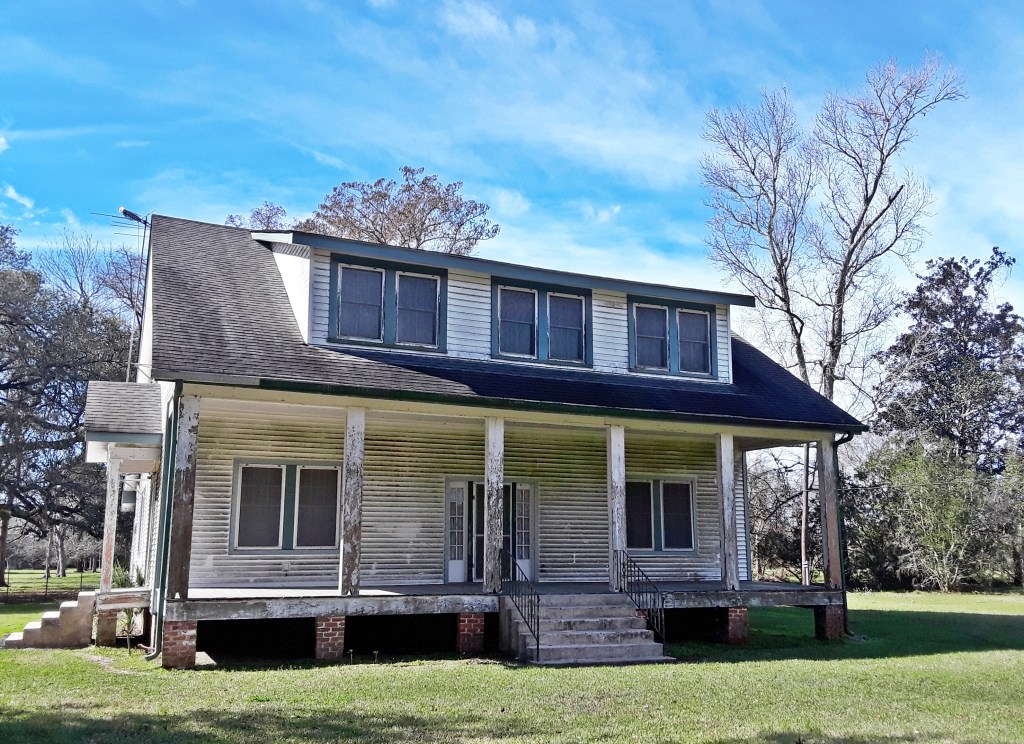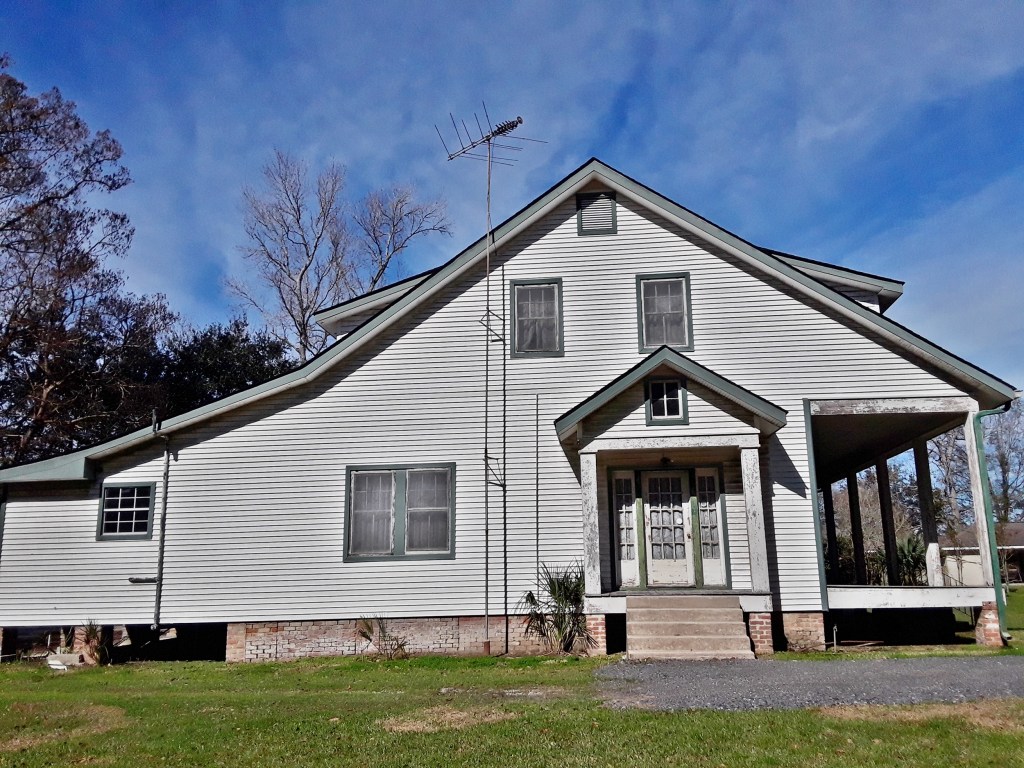Home » Posts tagged 'Martin family Louisiana'
Tag Archives: Martin family Louisiana
Three Women on a Porch: Story Behind the Picture
When I became the keeper of my family genealogy site, there already was a large photo gallery. Browsing through, I found this photo of three women on the porch of a French Creole cottage-style house. There was no description, but I knew the house was typical of South Louisiana along the Mississippi River, during the late 19th and early 20th centuries. The steps and porch looked vaguely familiar, as though long-ago memories were being tickled. From the women’s hair styles and clothes, I placed the photo around 1910.

I found the picture striking. The older women in the center had a square face and stern expression. Her eyes and brows resembled others I knew in the Martin family. The young woman at left in the photo had a graceful demeanor and lovely profile, studiously reading her book. At the photo’s right, a sprightly young woman with round face and faint smile held a dog in her lap. She was the only one looking at the camera, suggesting she was forthright and engaging. I was so taken by the picture that I chose it for the cover of my family history book, Upriver Families: Acadian Roots and Creole Heritage, co-authored with daughter Katherine Bonnabel and cousin Corinne Martin.
By then I had discovered who the women were. I sent the photo to several family members, and although there was some disagreement, the consensus was that they were Celeste Triche Martin in center, and her two daughters Irma Martin at left and Marie “Keet” Martin at right. Apparently, the photo was in a collection given to cousin Corinne by our aunt Minerva Martin, the family historian before passing that job on. Corinne remembered Aunt Min telling her the matriarch in the center was Celeste Triche Martin, our great-grandmother and our grandfather J.B. Martin Jr.’s mother. J.B. (Jean Baptiste) was brother to Irma and Marie “Keet,” as well as six other siblings. The source of the photo is unknown.
J.B. Martin Sr. was our great-grandfather and husband of Celeste. He was clerk of court for St. Charles Parish and worked in Hahnville. Celeste’s father, J.C. Triche Sr., was editor of the St. Charles Herald and quite influential. In 1883, the sale of property to Celeste Triche Martin was recorded, it was once part of Colonel Richard Taylor’s Fashion Plantation. He was the son of U.S. President Zachary Taylor. After the Civil War, the plantation was sliced into several lots and sold. The Martin family situated a large two-story house built in typical French Creole style there, set well back from the road with a long driveway. The property was 162.66 acres, a long narrow rectangle extending west from the Mississippi River to a wooded, swampy area and the railroad tracks. The river was the main transportation artery and properties commonly came with river access. River Road was constructed in early 1900s but was rough and muddy much of the year.

The driveway led from River Road past the house to outbuildings including barn, garage, and storage shed. A porch bounded by railings ran the width in front, and plain square columns supported the roof. Central stairs on which the two daughters are sitting led up to the elevated first floor, and the mother is on the porch. Creole cottages typically had living and dining rooms on the first floor, and bedrooms on the second. Behind was an extension containing the kitchen, bathrooms, pantry, and storage. Two chimneys rose above the roof venting fireplaces. Later a three-window dormer was added to brighten the upstairs bedrooms.
Celeste’s husband died unexpectedly in 1897 at age 50, still holding office as parish clerk. Our grandfather J.B. Martin Jr. was 16 years old. Celeste managed the household and raised the six young children, assisted by her large extended family. She lived to see the new century and the success of two children: J.B. became superintendent of schools for St. Charles Parish for 31 years, and Marie “Keet” became a noted teacher, band director, and principal in the public school system for 41 years.
Irma married Leon Charles Vial I in 1902. His family owned adjacent property that was part of Fashion Plantation. He was a leading politician and sheriff for 22 years, initiating the “Vial Era” in parish politics. Holding public office on 10 different occasions, he never lost an election. Sheriff Vial’s sister Leonide Mary Vial (our grandmother) married Irma’s brother J.B. Martin Jr. in 1903. Called a “double marriage” in local parlance, this intertwined the Martin and Vial families in multiple ways. The couples were double in-laws and their children double first cousins.
Irma died in 1913 and Leon remarried the widow Marie Keller, whose family owned Home Place, a nearby plantation. Celeste died in 1924 at age 72. The house on River Road in Hahnville became home of Marie “Keet,” the youngest daughter, and her husband Laurent J. Labry. They adopted two children, grew orchids in a hothouse, and after Marie died in 1981, the house was sold. It was neglected for years, until a Vial family member bought it in 2020. Renovation was begun but put on hold by Hurricane Ida. Now boarded up with stabilized foundation, the old Creole cottage awaits renewal.
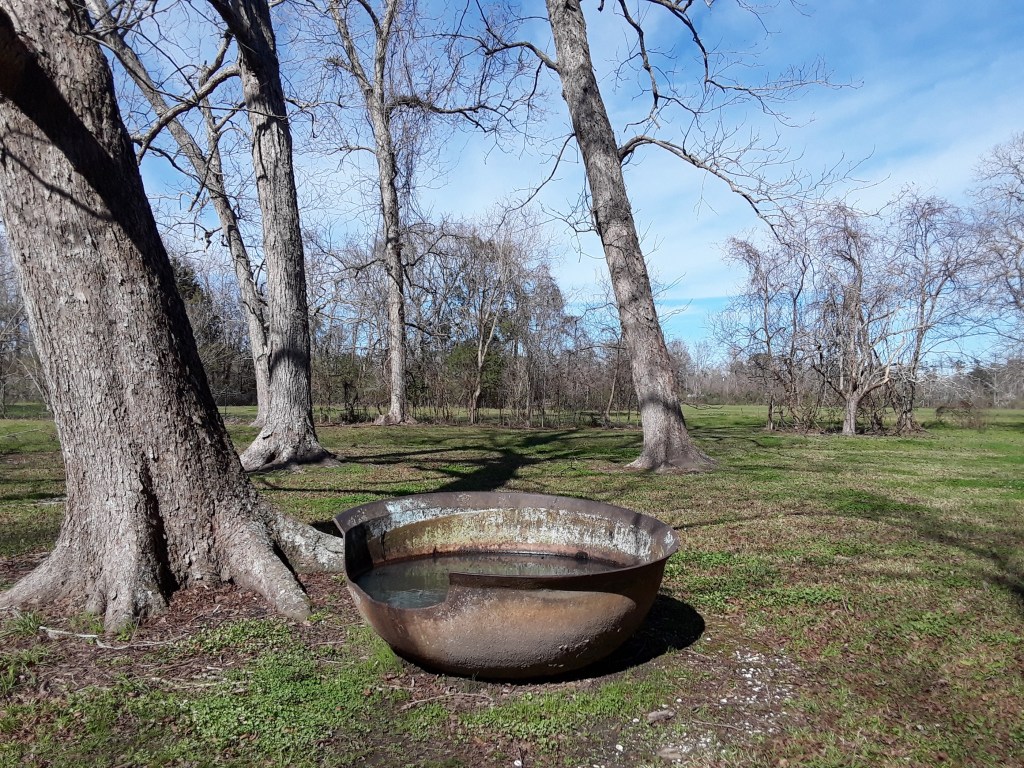
Are We Cajuns? My South Louisiana Family’s Acadian Saga
A Story of Origins by Leonide (Lennie) Martin
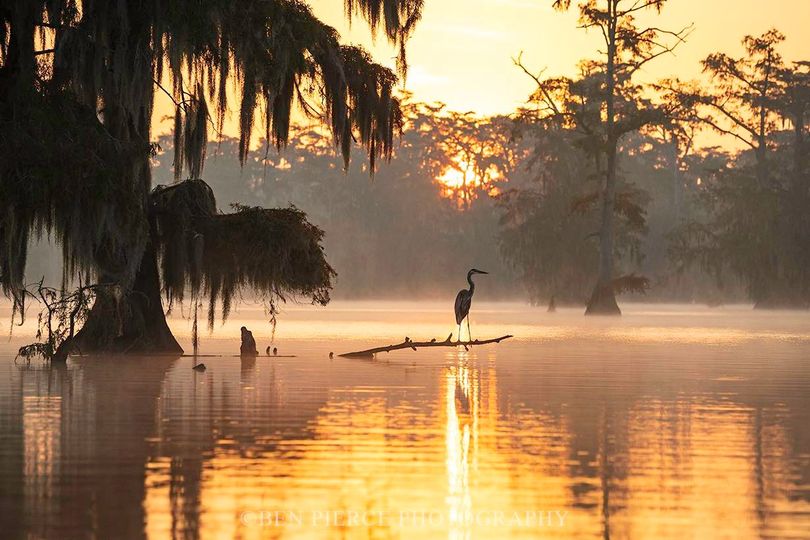
Growing up along the Mississippi River just above New Orleans, I was surrounded by French culture and language. My grandparents and many family members spoke French, but sadly, I didn’t learn it. There was a campaign to “Americanize” us and English was the language of business and success. Not all French people were alike, and I was aware of status based on education and prosperity. Cajuns were at the low end when I was growing up. My family was toward the higher end. This origins story is about how I was able to answer the Cajun question.
I have French heritage on both sides, but more in my paternal lineage involving the Martin and Vial families of St. Charles and St. John the Baptist Parishes. These families are intertwined with “double marriages” (brother-sister pairs from both families) and cousin marriages that often needed priest’s dispensation. Over generations they were local leaders in education, business, and politics. Their ancestors had arrived in New Orleans and upriver parishes in the mid-1700s from France, St. Domingue (now Haiti), and Acadia (now Nova Scotia, Canada). The Martin-Vial family has lived for seven generations in New Orleans and the Acadian Coast, as the region is called. Entering the 20th century they were professionals, merchants, and large-scale sugar planters.
When I was around eight years old, I asked my mother “Do we have any Cajun blood in our family?” Her response struck me, conveying shock and disdain: “Certainly not!” It stayed in my mind over the years. I wondered about her emphasis on not having any Cajun connections, since South Louisiana is full of them and we have so much French in our family. There were many who identified as Cajun among my friends and neighbors. But, I also knew there was a pervasive bias against Cajuns among my family’s social circles.
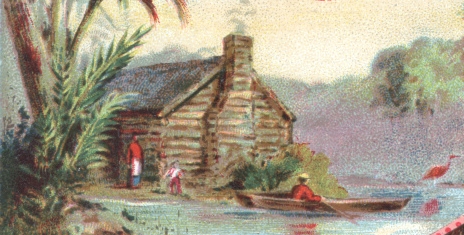
To understand the Cajun issue, it’s necessary to examine their history and cultural evolution. The term Cajun came into use during the early 1900s, a corruption of “Cadien” which is the shortened version of the French spelling Acadien (Acadian). The Acadians were French settlers who came to Nova Scotia in early 1600s, in a region they called Acadia. They created a unique farming culture and prospered for over three generations, reclaiming marshland using a French dike system (aboiteaux) to develop rich soil that made the region a bread basket for Europe. Acadia was also rich in furs and fishing, desirable lands hotly contested among European powers. It changed hands among France, England, and Scotland ten times in just over 100 years. After the final British victory in 1710, the Acadians lived in an uneasy status as French neutrals until their expulsion in 1755. The British wanted to give their rich farmlands to “good English-speaking Protestants” and essentially confiscated properties, shipping over 12,000 Acadians into exile in France and along Atlantic seaboard British colonies, none of which wanted them.
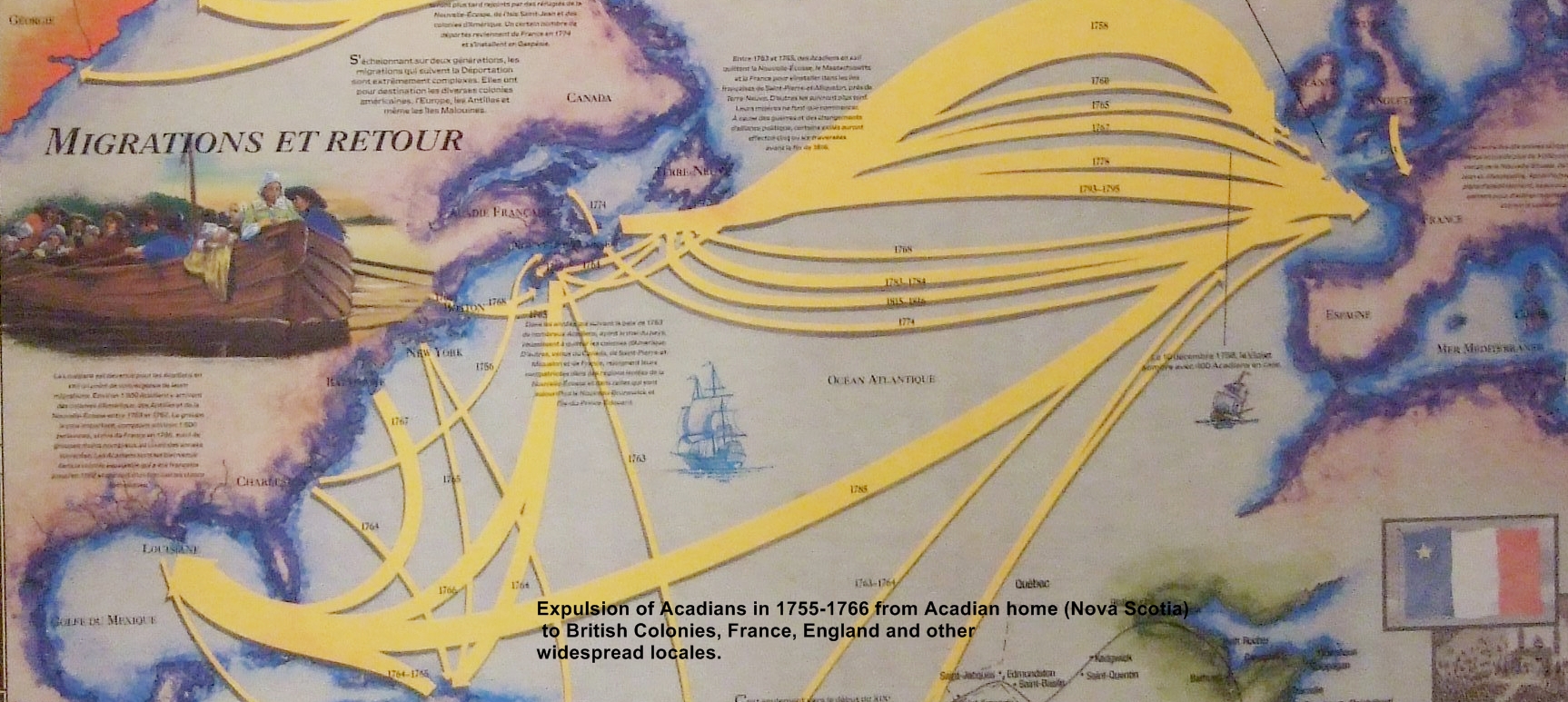
This Acadian diaspora is now considered violation of international law and ethnic cleansing, for which Queen Elizabeth II made amends in 2003. About 4,000 Acadian refugees made their way to South Louisiana, settled along the Acadian Coast and re-established their culture. Gradually they became Cajuns, whose preference for simple living, enjoying life, and tight kinship bonds led to being stereotyped as lazy, fun-loving, and unambitious ignoramuses living in shacks out on the bayou. Two world wars and economic opportunities led to mainstream lifestyles for many, and now Cajun culture is admired and celebrated for its cuisine, music, and festivals.
Over 60 years after I questioned my mother, I was drawn back to examine our Cajun connections. My oldest daughter Kathi Bonnabel had become the family historian and said we had Acadian ancestors. She invited me on an ancestor quest to Nova Scotia and New Brunswick, home to large groups of Acadians. Some family surnames such as Bourgeois, Leblanc, Bujol, and LaTour were common there. We made a pilgrimage to places they lived including Grand Pré and Beaubassin, and took part in celebrating National Acadian Day in Bouctouche.

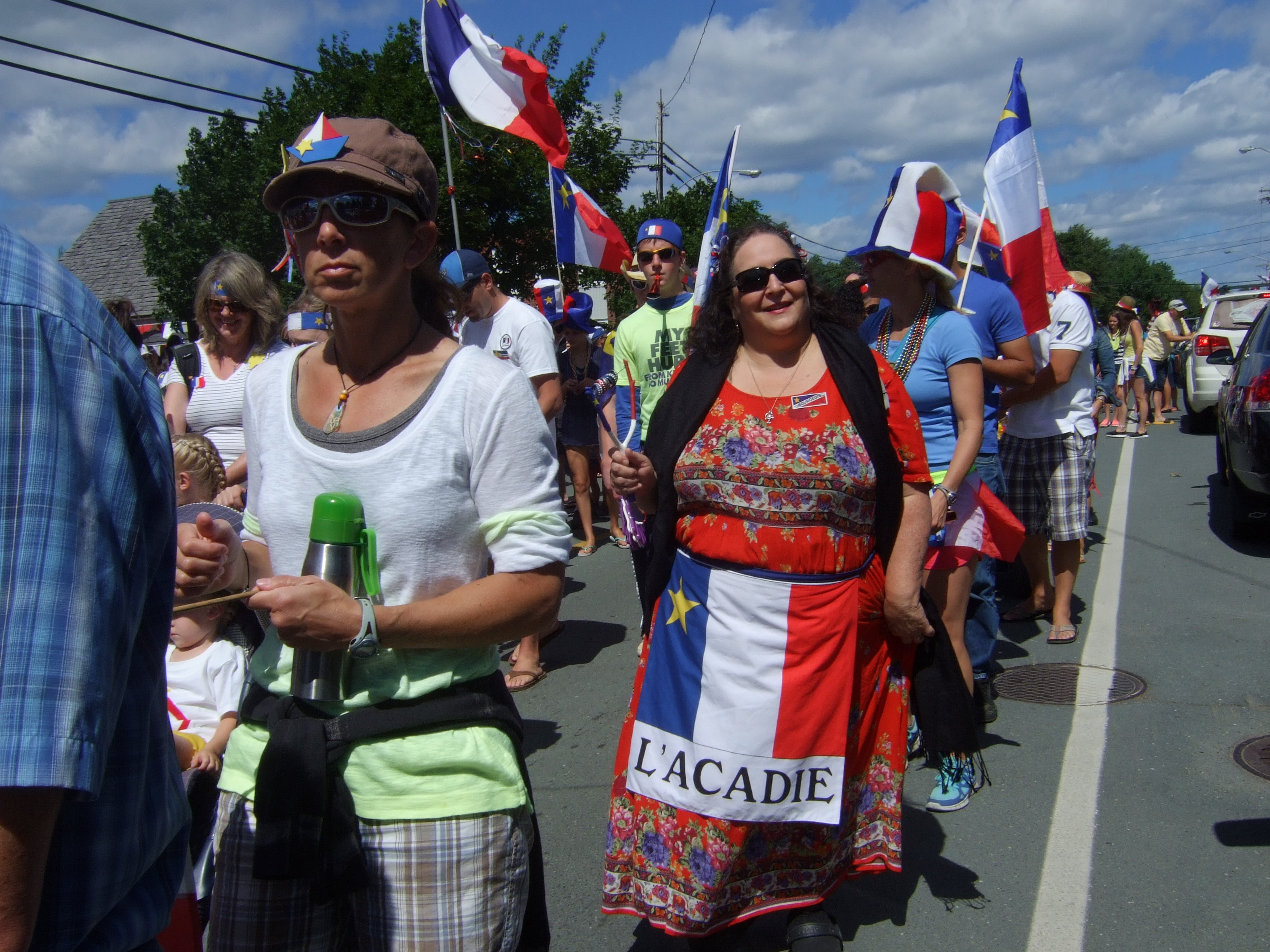
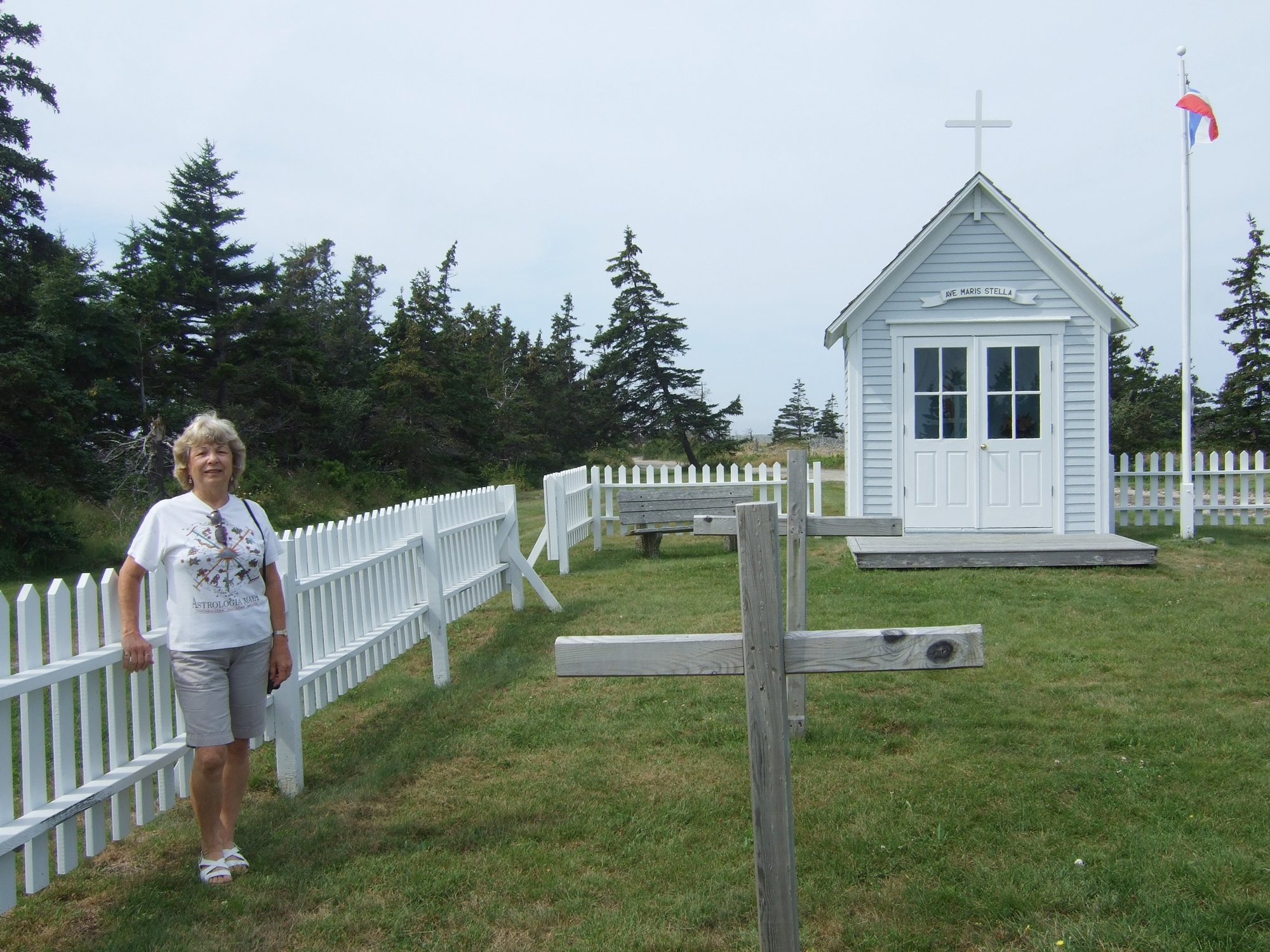
After this, I was hooked on genealogy. I decided to research the Vial family, which had several Acadian ancestors. My maternal grandmother was Leonide Mary Vial, she married J.B. Martin. Drawing heavily on my second cousin Wayne Vial’s extensive Geneanet tree, I traced backward from my grandmother for 11 generations, mostly through maternal lines, to Charles Amador de St. Étienne de LaTour. This distinguished ancestor was a French founder and Governor of Acadia in the early 1600s. His first wife was a native First Nations Mi’kmaq called Marguerite Membertou, daughter of Sagamore (Chief) Anli-Maopeltoog Membertou (Catholic name Henri). From them our Acadian line descended; four generations in Acadia, the last generation was expelled by the British. My ancestors were exiled to the Maryland colony, where they suffered hardships but did better than most, able to depart after 10 years and come to New Orleans. This family settled in Donaldsonville, in Ascención Parish.
Tracing our Acadian roots took nearly 10 years; Kathi and I worked together with help from cousins Corinne Martin and Wayne. Acadians reused given names frequently, finding maiden names was difficult, even surnames overlapped as we discovered two separate branches of Bourgeois, one Acadian and one directly from France. Once in Louisiana, the Acadians married into Spanish and French Creole families. “Creole” was a term used to describe someone whose family was European but they were born in the New World. Eligible daughters to marry military and government men where suitable women were scarce, and upward social mobility were driving forces for this. Marguerite Bujol was the last purely Acadian ancestor; she married Juan Francisco Vicente Chevalier Vives, a Spanish military commander, in 1780. The next five generations continued marrying Creole families and there was no further infusion of Acadian blood.
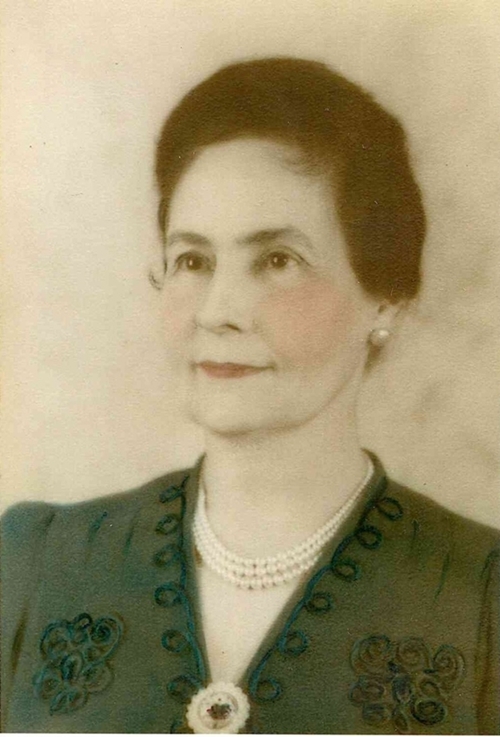
By my grandmother’s generation, the proportion of Acadian genes was reduced to 3.125%. Culturally the Vial-Martin family was completely Creole and had forgotten our Acadian roots. Even the Creole concept was faint and we were Americanized, with a French twist. My father was 1.56% Acadian and I’m a mere 0.78%. While we can say that we have Acadian heritage, my mother was conceptually if not technically correct—we don’t have Cajun blood, because what remained of it had turned Creole.
But, our Acadian origins remain precious to Kathi and me. Our efforts to trace the family lineage led to publishing a book: Upriver Families: Acadian Roots and Creole Heritage (Made For Success Publishing, Issaquah WA, 2022). The book goes by generations, describing the families, societies, and historic events surrounding each. It also tells the story of how the Vial and Martin branches were separated by a feud during the 1940-50s and got reconnected during our genealogical research. We describe several famous, curious, and notable relatives and their contributions to society. With this exploration of origins and reconnections among families, we are affirming our abiding love for places and people with tangled roots and colorful, complex heritage.



